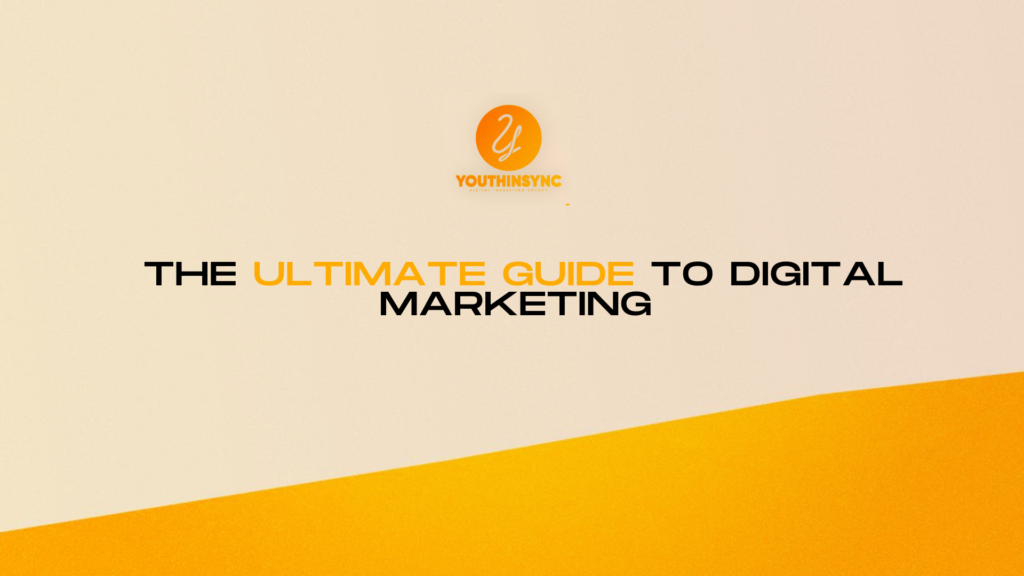Introduction
Digital marketing is crucial for businesses aiming to enhance their online presence and connect with target audiences. In today’s fast-paced digital world, having a well-structured digital marketing strategy can be the key to staying competitive. Whether you’re a small business owner or a marketing professional, mastering digital marketing will enable you to engage customers, generate leads, and ultimately grow your brand. This guide provides an in-depth look at essential digital marketing strategies, the most effective channels, and best practices for 2024 and beyond.
Understanding Digital Marketing
What Is Digital Marketing?
Digital marketing involves using digital channels such as search engines, social media, email, and websites to reach consumers. It has become the cornerstone of modern marketing due to its versatility and ability to provide precise targeting and measurable results. Unlike traditional marketing methods that rely on mass communication (e.g., television and radio ads), digital marketing focuses on personalized, data-driven interactions with consumers.
Key Elements of Digital Marketing
Digital marketing includes various strategies and techniques aimed at boosting online visibility, building brand awareness, and converting potential customers. Here are the core elements:
- Search Engine Optimization (SEO): SEO focuses on optimizing website content, structure, and technical aspects to improve rankings on search engine results pages (SERPs). By targeting the right keywords and following best practices, SEO helps drive organic traffic and build brand authority.
- Content Marketing: Content marketing involves creating valuable, relevant, and consistent content to attract and engage a target audience. From blog posts and videos to whitepapers and infographics, content marketing is all about delivering value and establishing trust.
- Social Media Marketing (SMM): Social media platforms like Facebook, Instagram, LinkedIn, and Twitter allow businesses to connect with their audience, share engaging content, and build brand loyalty. By crafting tailored messages and fostering community engagement, social media marketing plays a significant role in building brand visibility.
Essential Digital Marketing Strategies
1. Search Engine Optimization (SEO)
SEO remains a foundational aspect of any successful digital marketing strategy. With millions of searches happening every day, appearing on the first page of search results can be a game-changer for businesses. Effective SEO involves:
- Keyword Research: Identifying relevant keywords that your target audience is searching for is the first step. Tools like Ahrefs, SEMrush, and Google Keyword Planner can help you discover high-volume, low-competition keywords that are valuable for your niche.
- On-Page Optimization: This includes optimizing title tags, meta descriptions, headers, and content with relevant keywords. On-page SEO also focuses on improving content readability, using internal links, and optimizing images with alt tags.
- Technical SEO: Ensuring your website is technically sound is essential. This includes improving site speed, mobile responsiveness, and ensuring that your website is crawlable by search engines. Structured data and schema markup can also enhance search visibility.
- Link Building: Backlinks from authoritative websites boost your site’s credibility. Building quality backlinks through guest posts, influencer outreach, and content partnerships can enhance your rankings.
2. Content Marketing
Content marketing is all about delivering the right message at the right time to the right audience. This strategy builds trust, generates leads, and positions your brand as an industry leader. Key aspects of content marketing include:
- Blogging: Blogs are a cornerstone of content marketing. They allow you to educate your audience, answer their questions, and establish expertise. High-quality blog posts optimized for SEO can drive traffic and nurture leads.
- Video Marketing: Video content is gaining popularity due to its engaging nature. Platforms like YouTube, TikTok, and Instagram provide great opportunities to reach new audiences. Tutorials, product demos, and customer testimonials are some effective video content types.
- Infographics: Visual content like infographics can make complex information more digestible. They are highly shareable and can boost social media engagement and backlinks.
- eBooks and Whitepapers: Long-form content like eBooks and whitepapers are effective for lead generation. They provide in-depth information that can help your audience solve specific challenges while positioning your brand as a go-to resource.
3. Social Media Marketing (SMM)
Social media marketing is an indispensable part of any digital strategy. With billions of active users worldwide, platforms like Facebook, Instagram, and LinkedIn provide the perfect environment to build brand awareness and engage with your audience. Successful SMM involves:
- Audience Targeting: Social media platforms offer powerful targeting options. You can reach specific demographics based on interests, behaviors, and more, ensuring your content reaches the most relevant audience.
- Content Planning and Scheduling: Consistency is key to building an engaged following. Planning your content and scheduling posts in advance ensures a steady flow of content that aligns with your audience’s preferences.
- Engagement and Community Building: Engaging with your followers through comments, direct messages, and interactive content (like polls and Q&As) strengthens relationships and builds brand loyalty.
- Paid Social Advertising: Paid social ads can amplify your reach. Whether it’s boosting posts or running targeted ad campaigns, paid social media advertising can deliver results quickly.
4. Pay-Per-Click Advertising (PPC)
PPC advertising offers immediate visibility and drives targeted traffic to your website. Unlike SEO, which takes time to show results, PPC campaigns can generate leads instantly by placing your ads at the top of search results or social media feeds. Effective PPC strategies include:
- Keyword Bidding: In platforms like Google Ads, you bid on relevant keywords for your ads to appear in search results. High-quality ads and optimized landing pages contribute to better Quality Scores, which can lower your cost-per-click (CPC).
- Ad Copy Optimization: Crafting compelling ad copy that includes your target keywords, a clear value proposition, and a strong call-to-action (CTA) is crucial for high click-through rates (CTR).
- Landing Page Optimization: Your landing page should be relevant to your ad and optimized for conversions. Ensure the design is user-friendly, the content is aligned with user intent, and there’s a clear CTA.
- Retargeting: Retargeting ads allow you to reach users who have previously interacted with your website but didn’t convert. These ads remind users of your products or services, increasing the chances of conversion.
5. Email Marketing
Email marketing remains one of the most cost-effective and high-converting digital marketing channels. It allows businesses to nurture leads, build relationships, and promote products directly to a subscriber’s inbox. Best practices for email marketing include:
- Personalization and Segmentation: Personalizing emails based on user behavior and segmenting your email list ensures that your messages are relevant to each subscriber’s interests and needs.
- Automation: Automated workflows allow you to send timely and relevant messages based on specific triggers, such as welcome emails, abandoned cart reminders, or follow-up sequences.
- A/B Testing: Continuously testing subject lines, email copy, and design elements can help improve open rates and conversions.
- Tracking and Analytics: Tools like Mailchimp and HubSpot provide detailed insights into your email campaigns, including open rates, click-through rates, and conversion rates. Use these metrics to optimize your strategy.
6. Affiliate Marketing
Affiliate marketing allows businesses to leverage third-party marketers to promote their products or services. Affiliates earn commissions for driving traffic or sales, making this a low-risk, high-reward strategy. Key considerations for affiliate marketing include:
- Selecting the Right Affiliates: Choose affiliates who align with your brand and have access to your target audience. Influencers, bloggers, and content creators are common affiliates who can drive substantial traffic.
- Providing Marketing Materials: Offering high-quality promotional materials, such as banners, links, and product descriptions, helps affiliates market your products more effectively.
- Tracking Performance: Use tracking software to monitor clicks, conversions, and sales generated by your affiliates. This data helps you optimize commission structures and identify top-performing affiliates.
Digital Marketing Channels
An effective digital marketing strategy relies on selecting the right channels to reach your audience. Here’s an overview of the primary digital marketing channels:
1. Organic Search (SEO)
Organic search remains one of the most important channels for generating traffic. By optimizing your website’s content and structure, you can rank higher in search engine results and attract qualified leads.
2. Paid Search (PPC)
Paid search is an excellent way to gain immediate visibility for competitive keywords. Platforms like Google Ads and Bing Ads allow you to create targeted campaigns that reach users actively searching for products or services similar to yours.
3. Social Media Platforms
Each social media platform serves different purposes:
- Facebook: Ideal for reaching a broad audience and running targeted ad campaigns.
- Instagram: Best for visual storytelling and engaging younger audiences.
- LinkedIn: Perfect for B2B marketing and professional networking.
- Twitter: Suitable for real-time updates, news sharing, and thought leadership.
4. Email Marketing Platforms
Platforms like Mailchimp, Constant Contact, and ActiveCampaign enable businesses to design, automate, and track email campaigns. These platforms offer features like list segmentation, A/B testing, and analytics, making email marketing more efficient.
5. Content Distribution Channels
Distributing content across various channels ensures it reaches your audience wherever they are. Blog posts, YouTube videos, podcasts, and guest posts are all effective content distribution methods. Repurposing content for different formats also extends its reach.
Best Practices for Digital Marketing
Following best practices is essential for maximizing your digital marketing results. Here’s a deeper look at what you should prioritize:
1. Conduct Comprehensive Market Research
Understanding your audience’s needs, preferences, and pain points helps you tailor your digital marketing strategy. Tools like Google Analytics, social media insights, and customer surveys provide valuable data.
2. Focus on Creating Value
Your content should always prioritize adding value over making a sale. Whether it’s through educational blog posts, how-to videos, or helpful infographics, delivering value builds trust and positions your brand as an authority.
3. Prioritize Mobile Optimization
With more users accessing the internet via mobile devices, ensuring your website and content are mobile-friendly is crucial. A responsive design, fast load times, and easy navigation improve user experience on mobile.
4. Continuously Monitor and Optimize Campaigns
Digital marketing is data-driven, meaning you must continuously track performance metrics and make adjustments. A/B testing, analytics tools, and regular audits help you refine your strategy and maximize ROI.
5. Build an Omnichannel Presence
An integrated approach to digital marketing ensures consistency across all channels. From social media and email to your website and paid ads, providing a seamless experience helps build brand loyalty and enhances customer engagement.
Conclusion
In 2024, digital marketing remains an ever-evolving landscape. Businesses that stay ahead of the curve by implementing well-rounded strategies, leveraging data-driven insights, and continuously optimizing their efforts will achieve long-term success. By understanding the essential strategies, selecting the right channels, and following best practices, you can develop a digital marketing plan that not only meets your business goals but also delivers sustainable growth.

